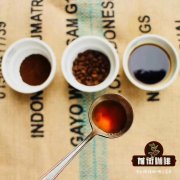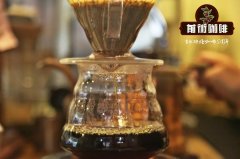Myanmar, a coffee producer that almost disappeared from the world coffee map.

For information, please follow the coffee workshop (Wechat official account cafe_style)
On July 13, 1813, the American Baptist Adoniram Judson and Ann Judson, Protestant missionaries known as the Apostles of Burma, came to Myanmar with Catholicism and coffee. As an indispensable drink in daily life, they began to try to grow coffee trees in Myanmar. In 1885, Burma became a British colony, and the colonists offered Burmese coffee to Queen Victoria, and then began to introduce coffee from the British royal estate to grow in Myanmar. In 1894, due to geographical and other reasons, Britain moved the then administrative office from Maing Thauk (Bao Stedman) on the east bank of Lake Inle to Dongzhi. Dongzhi is located on the Shan Plateau in southeastern Myanmar at an altitude of 1436 meters. It is the political, cultural and commercial center of Shan State. It is the fourth largest city in Myanmar and has a tropical and subtropical climate. Because of its unique geographical and climatic environment, Dongzhi Coffee has become the representative of Myanmar's top coffee. In 2015, according to the rating of 200 coffee experts, including Win rock International of the United States, Burmese coffee scored 85 points, and the Burmese Coffee grower Association declared that Burmese coffee is of the best quality among ASEAN countries. Minghella Coffee is a selection of Dongzhi top coffee beans and processed by high-end roasting technology. it is the only Burmese coffee brand with high quality and mellowness in China. therefore, in a sense, Minghella Coffee is the representative of Burmese coffee.
When it comes to coffee, the first thing that comes to mind is the largest coffee bean producing area in the world: central and South America. But there is another place on the world coffee map that has almost disappeared, and that is Myanmar. Burmese coffee actually has a history of more than 200 years, but because of the lock-in policy and isolation from the rest of the world, the quality of coffee has plummeted and is regarded as weeds. But in fact, Myanmar is a perfect place to grow coffee, longitude and latitude, high mountain temperature difference between day and night, undeveloped land, excellent innate conditions, make coffee beans sweet and fresh, rich in layers.
Representative of coffee production in Myanmar today: greenfield Coffee Manor (Green Land) has an extensive coffee plantation, which was awarded the Outstanding Coffee cultivation Certification (Outstanding Coffee Growing Certificate) of the Food and Agriculture Organization of the United Nations (Food and Agriculture Organization of the United Nations, FAO) in 2003. Greenland Manor not only produces the highest quality alpine Arabica coffee beans in Myanmar, but also helps local coffee farmers bring their products to market. In addition, its coffee beans won the championship at the Myanmar National Cup Test Conference (Myanmar National Cupping) evaluated by the American Fine Coffee Association (SCAA) and the Coffee quality Association (CQI) in 2016 with an eye-catching 87 points.
Located at an altitude of more than 1100 meters (3300 feet) above sea level, Greenland Coffee Manor covers a vast area. Costa rica T8667 (Costa Rican T8667) and Kenya SL-34 bourbon species (Kenya-derived SL-34) coffee trees grow and thrive in the shade of silver oaks. T8667, which originated in Portugal, is a hybrid of Timo and Kaddura. This breed of coffee was grown in Costa rica before it was introduced into Myanmar. T8667 is known for its excellent leaf rust resistance, high yield, large fruit and good cup test results. OGS recently tested coffee beans harvested in 2016 and found that the coffee beans have herbal, cream, lemon tea and blackcurrant flavors as well as good acidity and sweetness. SL-34 is a coffee variety selected by the French Missionary Society and cultivated in the Scott Laboratories laboratory in Kenya in the mid-1900s. It also has a reputation for decay resistance, large fruit and high quality cup testing. Silver oak can not only filter out sunlight and protect coffee trees from strong winds, but also maintain soil moisture. Fallen leaves are also an important source of micronutrients for coffee trees, which is why the crops in green coffee farms are full of life. The coffee variety SL-34 in the coffee garden has an excellent flavor, with a hint of spices and blackcurrant aromas, smooth in the mouth, not only with mild lemon acidity, but also a refreshing finish.
Important Notice :
前街咖啡 FrontStreet Coffee has moved to new addredd:
FrontStreet Coffee Address: 315,Donghua East Road,GuangZhou
Tel:020 38364473
- Prev

The style characteristics of Costa Rican Coffee
For more information on coffee beans, please follow the Coffee Workshop (Wechat official account cafe_style). In the past, Costa Rica has successfully sold its coffee according to the name of its producing area. However, tastes vary from region to region, so it is well worth exploring each region to see what kind of coffee beans they can produce. CENTRAL VALLEY
- Next

About the classification of jadeite manor, the introduction of Panamanian red standard rose summer flavor,
For information, please follow the coffee workshop (Wechat official account cafe_style) the rosy summer of Panama. It seems that we will first think of the jadeite estate. We still remember its past achievements, and it is true that it can be said to be a rosy summer year for many years. It is in those years that we remember this place, remember the rosy summer, and of course, I do not know how many people are because of the delicious rosy summer.
Related
- Does Rose Summer choose Blue, Green or Red? Detailed explanation of Rose Summer Coffee plots and Classification in Panamanian Jade Manor
- What is the difference between the origin, producing area, processing plant, cooperative and manor of coffee beans?
- How fine does the espresso powder fit? how to grind the espresso?
- Sca coffee roasting degree color card coffee roasting degree 8 roasting color values what do you mean?
- The practice of lattes: how to make lattes at home
- Introduction to Indonesian Fine Coffee beans-- Java Coffee producing area of Indonesian Arabica Coffee
- How much will the flavor of light and medium roasted rose summer be expressed? What baking level is rose summer suitable for?
- Introduction to the characteristics of washing, sun-drying or wet-planing coffee commonly used in Mantenin, Indonesia
- Price characteristics of Arabica Coffee Bean Starbucks introduction to Manning Coffee Bean Taste producing area Variety Manor
- What is the authentic Yega flavor? What are the flavor characteristics of the really excellent Yejasuffi coffee beans?

